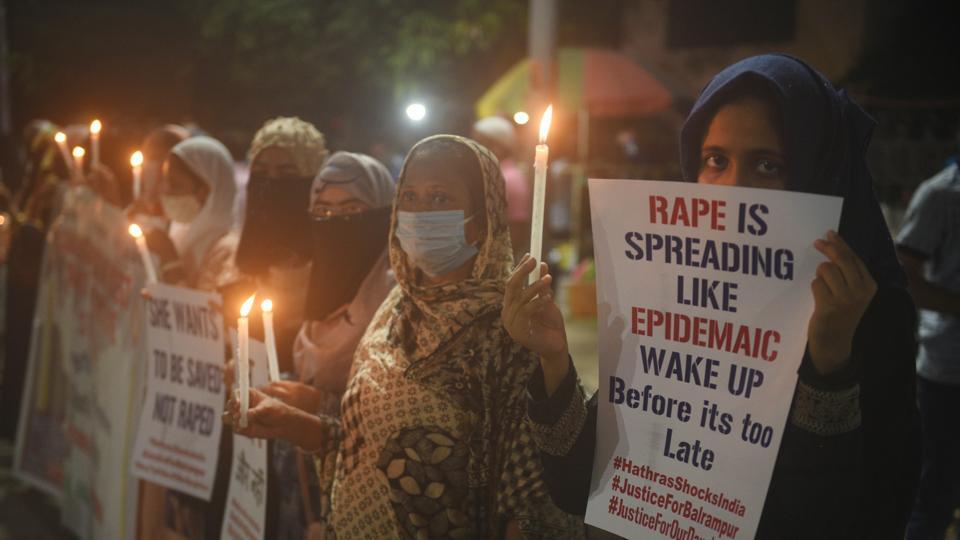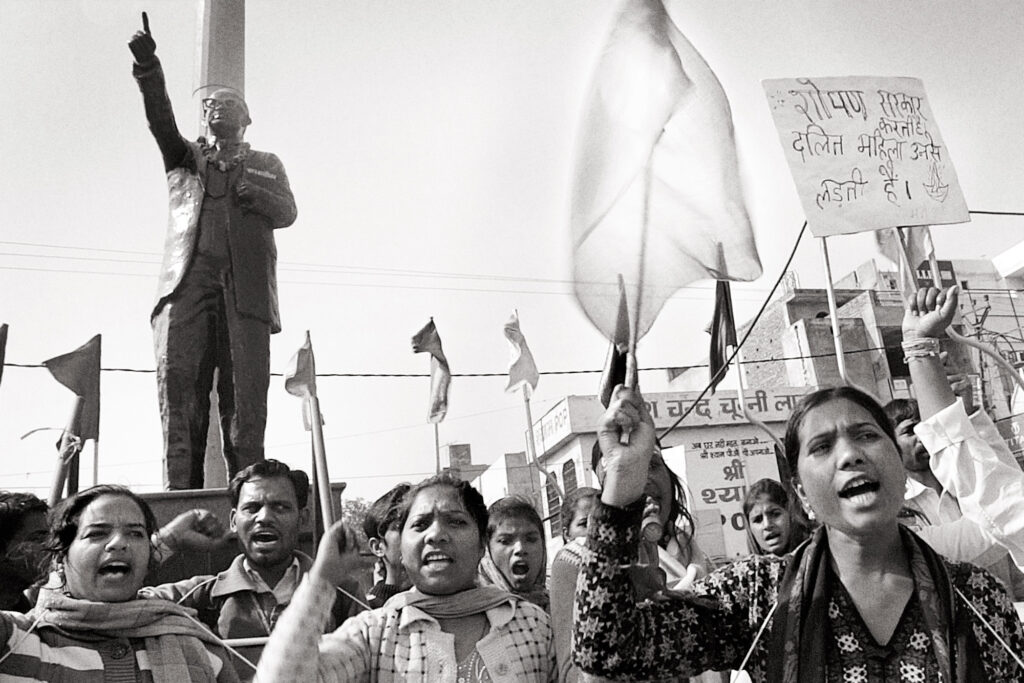
A rape case of September 2020 highlighted the systematic caste-based violence that is still prevalent in Indian society. A 19-year-old Dalit woman was gang-raped by four upper-caste men of the Thakur class in the Hathras district of Uttar Pradesh, which resulted in her death on 29th September 2020. Following her death, a protest erupted inside Safdarjung Hospital. After a day-long protest, the victim’s body along with her father and brother were taken back to the village. This was not all, what actually gained nationwide attention was the police forcefully cremating the victim’s body without the consent of her family. After the cremation, police came under a suspicious lens: alleged that they were trying to do away with the prime evidence of the crime.
The intersectional nature of this case needs to be remembered, Dalit women occupy the lowest rung of class, caste, and gender hierarchy. Sexual violence in form of rape has been used time and again to dehumanize them, to demonstrate and maintain the structure of hierarchy and power relations. What more evidence one would demand for the atrocities inflicted upon the women of the Dalit community that just a few days after the Hathras gang rape and murder case, a 22-year-old Dalit woman died in Uttar Pradesh’s Balrampur after she was raped. This sounds like a world far from the one imagined by Gandhi but it surely is not without civil rights.

From student groups to political leaders – people came forward to protest against the injustice that the victim and her family were subjected to. Acting in accordance to their rights as well as the philosophy of satyagraha, which was recollected on the account of Gandhi Jayanti, 2nd October 2020, when a young journalist at Lucknow was intimidated and manhandled, his camera’s memory card was snatched simply, by the police, because he was trying to capture how the police were prohibiting people from going near the statue of Gandhi at Lucknow’s GPO Park to pay their homage. The action of police brought out the curse on the Dalit women in light and was justified by the UP government by stating that it was done “to avoid large-scale violence” the next morning. The UP government also said that the decision was taken on the basis of intelligence inputs. This brings up the question of the competence as well as accountability of the police, who were they actually trying to protect. The idea of satyagraha, if invoked, seems relevant to the present society as well. One of the main ingredients of the Satyagraha concept is non-violence which gets easily accommodated in the social media age. The Hathras incident spread fast and though the corrupted and manipulated details also found their way into our electronic devices, the awareness it created had a huge effect on the numerical turnout at the protests. In addition to that, the discontentment displayed on social media influenced the demand for accountability from the state government. As protests broke out against the system: citizens, student groups, activists, and politicians gathered at Jantar Mantar, Delhi, demanding justice for the Hathras gang rape and murder case victim. Such a situation can be categorized as a method influenced by Satyagraha.

The connection between Dalit justice and equality, and the practice of Satyagraha is not new. It’s common knowledge that Gandhi was a staunch supporter of Dalit rights, it is in this context that we have incidents of him organizing, and at times being the central force of, satyagraha movements for the advancement of the Dalit rights. These were not solely associated with Gandhi alone, Ambedkar also used the method for propagating Dalit rights – Mahad satyagraha is one of the prominent examples of the same. Seen in this light, the protests of contemporary times reflect a resonance as well as a continuation to the satyagraha movements of the Gandhian era. The concept of the satyagraha and the message of non-violence happen to be one of the most relevant ideals that society today should adhere to and adapt to. The core values are intact; the understanding of the new generation can be subject to its socio-political environment, the philosophy, however, still holds the appeal for the masses.

Satyagraha, a concept by which Gandhi is said to have illuminated the path towards the future of India, works as an ideal method even today. Its close association with the practice of non-violence makes it difficult but desirable at the same time. Looking at the events of the Hathras incident and the protests that followed one could see how complex the truth is and how hard it is for people to support it. The anxieties of certain groups in our society came to light in due course but emphasized the need for the practice of Satyagraha in today’s society as well. Here, we can discern between the actions of the agents of the state and the public, the citizens. Whatever reasons the state might have had to act in the given way, the citizens played an important role nonetheless. The aftermath did result in the arrest of the culprits, but the family still awaits justice. Thus, the whole incident unfolded the transitioning mentality of Indian society, which still needs to go a long way before regarding itself as either progressive or tolerant.
Khyati is a third year History student at Lady Shri Ram College for women. She believes that words have the power to change the society, and tends to use these. Interested in research, she's expecting to pursue the same in furure.


